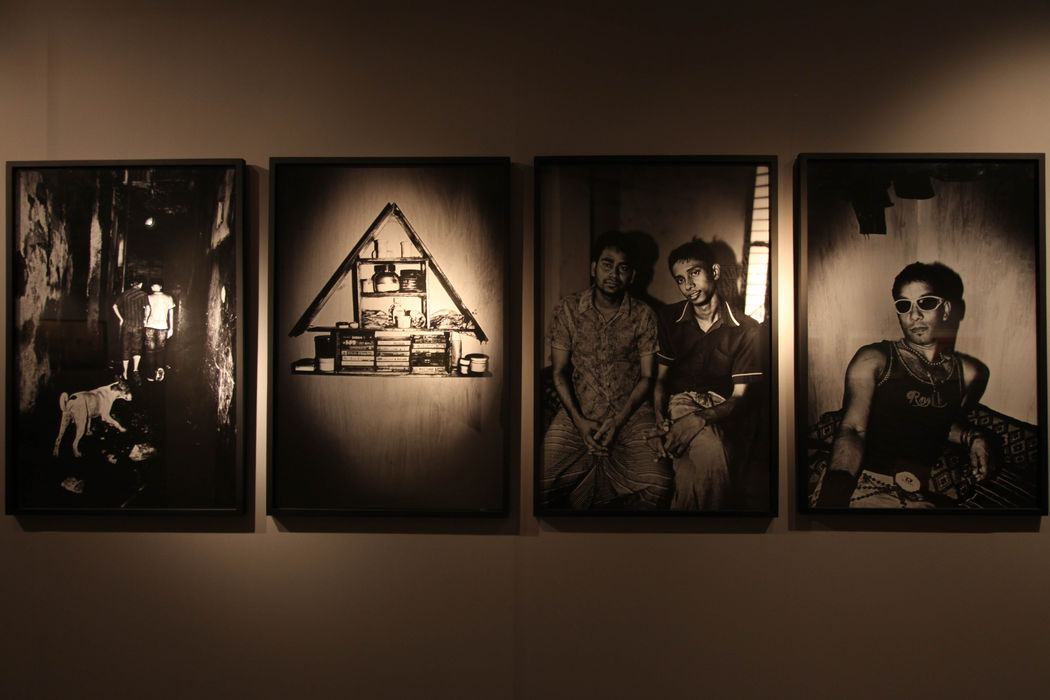B/DESH is shorthand for Bangladesh, of course, but also, bidesh, the Bangla word for abroad, a foreign land, an extraterritorial elsewhere. Desh, on the other hand, designates a homeland, accompanied by a sense or semblance of a national identity, however notional or real. So the home and the world are conjoined and separated by the most tenuous of lexical and phonetic expedients: the slender slash differentiating desh and bidesh that could also be seen as a marker of everything that lies between them. And ‘in between-ness’ is, if anything, a perenially shifting ground, a provisional state that might itself be an image of that potential undifferentiation of identity and alterity, ‘self’ and ‘other’ symptomatic of the globalised present. To have a sense of rootedness and yet not be insular, to acknowledge the feeling of homelessness (the spiritual malaise par excellence of the modern condition) and find new ways of negotiating it in the face of the neutralisation of difference that is the cultural logic of globalisation - these are some of the burdens faced by those once relegated to the margins and now deemed to be ‘emerging’ on the world scene. The tragically fraught history of Bangladesh’s coming into being as a nation, the chronicle of political turmoil and violence that has marked its relatively short existence as an independent state, cannot but be salient in the consciousness of the country’s intellectuals and artists and in their attempts to make sense of the vicissitudes of the present. To be a witness to their times is for many of them an ethical stance. For artists this imperative is doubled by another, namely, the need to find the form and medium most appropriate to their vision of the reality in which they find themselves. For many years now documentary photography has proved to be particularly compelling for a range of practitioners in Bangladesh, and the subjects they have tended to focus upon would seem to demand such an approach. But often their eyes have been schooled in allegorical or conceptual ways of seeing, and questions of ‘objectivity’ that underlie the documentary stance are subtly callibrated to the degree of empathy or distance they bring to their approach, as in Shumon Ahmed’s ongoing project within the ship graveyard on the Chittagong coast, reputedly the largest in the world. For Gazi Nafis, on the other hand, the camera has been the instrument to capture intimate moments in the lives of a range of sexual minorities, in images that betoken an engaging complicity with these social outcasts. In contrast, the anthropological nature of some of the subjects explored by the Australian Bengali artist Omar Adnan Chowdhury (the juxtaposition of a Hindu and a Shia festival in old Dhaka, for example) in his large scale audio-visual installations becomes the occasion for a slow, immersive and contemplative sensory experience. For some artists working in media that are not lens-based, the fix of the real is less than imperious. The peculiar assortment of creaturely forms that people the paintings of Ronnie Ahmed, for example, are the denizens of a parallel world that is gleefully awry and somewhat hallucinatory all at the same time. The oneirism of his work couldn’t be further removed from the cool detachment that Ayesha Sultana brings to her pictorial representations of familiar urban spaces, their blank allure a façade for something verging on the uncanny. Another aspect of her work dispenses with representation altogether, the more to explore the poetics of graphic inscription and the material qualities of surface and texture. This interest in investigating the rudiments of form is shared by Rana Begum, who was born in Bangladesh but grew up in Britain. Her interest in the pristine geometry of sharply angled coloured planes (in paper or aluminium) and the ways in which these might become receptacles of light inform her sculptural practice ; her rigorous and yet sensuous abstraction hints at the subtle coalescence of the Islamic architectural ideal of emptiness as a numinous space and the pared-down unitary forms of Minimalist sculpture. The formal ‘syncretism’ of Begum’s work could be contrasted with the exercises in cultural translation and critique undertaken by the conceptual artist and writer Naeem Mohaiemen, who divides his time between Dhaka and New York. Working with photography and film, he has sought to recover and critically reframe certain key emblematic moments and events (both private and public) in the tragic history that led to independence and the creation of a sovereign state. As a writer and as an artist, Mohaiemen’s work has dwelt perceptively on the political, ideological and cultural implications of B/DESH and the complexities of its current trajectories.
Artists
Naeem Mohaiemen
Rana Begum
Omar Adnan Chowdhury
Ronni Ahmed
Shumon Ahmed









